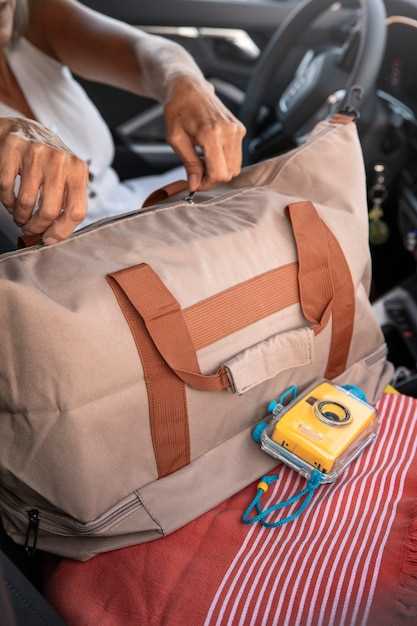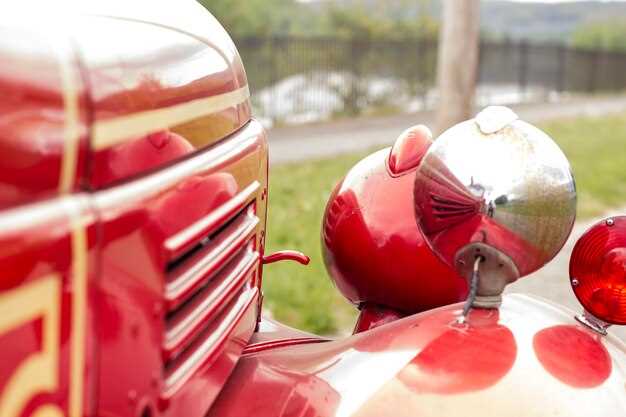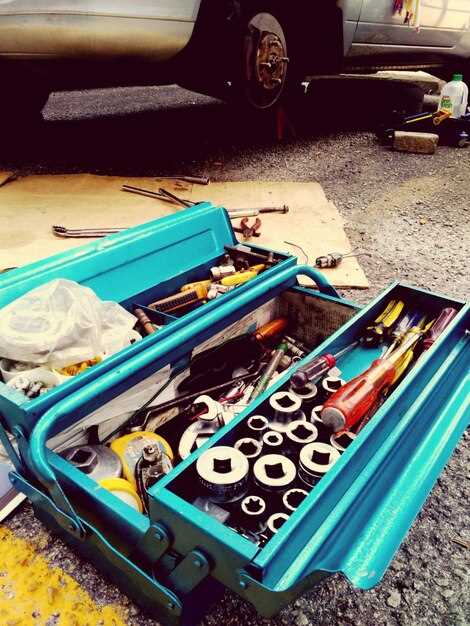
Owning an antique vehicle is a distinct pleasure, enveloped in the charm of classic design and the thrill of a bygone era. However, vintage cars often come with their own set of challenges, particularly when it comes to roadside safety. To ensure that your experience remains enjoyable, having a well-prepared emergency kit is essential for any antique vehicle owner.
Antique cars may not be equipped with the modern technology that supports current vehicles in emergencies. Therefore, being proactive by assembling a comprehensive emergency kit can significantly increase your safety on the road. Such preparedness not only helps you address minor issues but also augments your confidence while driving a classic on today’s highways.
In this article, we will explore the must-haves for an effective emergency kit tailored specifically for antique vehicle owners. From basic tools to specialized items, each component plays a crucial role in safeguarding your vintage car experience and providing peace of mind during roadside uncertainties.
Necessary Tools for On-Road Repairs of Classic Cars
When driving a classic car, having the right tools in your emergency kit can mean the difference between a minor inconvenience and a major setback. It’s essential to equip yourself with necessary tools that can help you address common issues on the road, ensuring your safety and that of your vehicle.
1. Wrench Set: A comprehensive wrench set is crucial for adjusting or replacing bolts and nuts. Ensure it includes both standard and metric sizes to accommodate various parts found in classic cars. Having the right wrench on hand can help you quickly address issues such as loose engine components or wheel lug nuts.
2. Screwdriver Set: A quality screwdriver set with both flathead and Phillips screwdrivers is necessary for tightening or loosening screws in the dashboard, lights, and other essential components. This versatility allows you to perform quick fixes before a more comprehensive repair can be made.
3. Tire Repair Kit: A tire repair kit is vital for dealing with punctures while on the road. This kit should include a tire patching kit, air compressor, and a jack. Being able to repair a tire quickly ensures you’re safe and can continue your journey without assistance.
4. Pliers and Cutters: A sturdy set of pliers, including both needle-nose and slip-joint options, can assist in gripping, twisting, and cutting wires or other materials. Pliers can be particularly useful in dealing with electrical issues or when you need to remove stubborn components.
5. Flashlight: A reliable flashlight is essential for conducting repairs after dark or in low-light conditions. Choose a durable, bright flashlight to illuminate your working area, helping to ensure your safety while you troubleshoot any issues.
6. Multimeter: A multimeter is a valuable tool for diagnosing electrical problems common in classic cars. It allows you to check the voltage, current, and resistance in various circuits, helping you pinpoint issues that could leave you stranded.
7. Jumper Cables: Jumper cables can be a lifesaver if your classic car’s battery dies. Ensure you carry heavy-duty cables that can handle the power demands of older vehicles. A successful jump-start can save you from a lengthy wait for roadside assistance.
8. Spare Fuses and Belts: Keeping a selection of spare fuses and belts can help you address electrical failures or issues with critical components. Given the age of classic cars, these parts are vulnerable to wear and may require replacement on short notice.
By incorporating these essential tools into your emergency kit, you enhance your capability to perform on-road repairs. This preparedness not only ensures the safety of you and your classic vehicle but also allows you to enjoy the open road with confidence.
First Aid Supplies Every Vintage Vehicle Owner Should Carry

For classic vehicle enthusiasts, being prepared for any situation on the roadside is essential. First aid supplies can make a difference in emergencies, ensuring both driver and passengers remain safe. Here’s a list of must-have items to keep in your antique vehicle.
First and foremost, a well-stocked first aid kit is crucial. This kit should include adhesive bandages in various sizes, sterile gauze pads, and adhesive tape to address minor cuts and scrapes. A pair of sterile gloves will help protect against contamination when administering aid.
In addition to bandaging supplies, include antiseptic wipes and antibiotic ointment to clean and treat wounds. Pain relief medications, such as aspirin or ibuprofen, can alleviate discomfort from minor injuries or headaches that may arise during a long drive.
It’s also wise to carry a triangular bandage, which can serve multiple purposes, such as a sling for an injured arm or for securing larger dressings. A roll of cohesive bandage wraps is useful for holding dressings in place, especially in hard-to-reach areas.
In case of allergic reactions, having antihistamines is vital. If someone in your group has known allergies, consider carrying an epinephrine auto-injector for severe reactions, especially when traveling in remote areas where help might not be immediately available.
Other essential items include scissors for cutting gauze or clothing, tweezers for tick removal or splinter extraction, and a breathing mask for CPR. Keeping a first aid manual in your kit can provide critical guidance in emergencies.
Lastly, ensure that the first aid kit is easily accessible within your classic vehicle. Regularly check the kit to replenish expired items and restock any supplies that have been used. Being prepared with these essential first aid items can provide peace of mind and enhance safety on your journeys through the open road.
Emergency Contact Information and Vehicle Documentation Essentials

For classic vehicle owners, having accurate emergency contact information and essential vehicle documentation is crucial for ensuring a smooth roadside experience. First and foremost, it’s important to keep a list of emergency contacts in your glove compartment. This should include the phone numbers of family members, close friends, and a roadside assistance service. In the event of a breakdown, you’ll have immediate access to support and assistance.
Additionally, proper vehicle documentation is vital. Always carry a copy of your vehicle registration and insurance details. These documents not only prove ownership but also are necessary in the event of an accident. Ensure that your insurance policy covers classic vehicles, as this can differ from standard coverage. Having these documents on hand can expedite the process if you encounter issues during your travels.
Furthermore, it is advisable to maintain a log of any past maintenance and repairs specific to your classic vehicle. This helps not only in tracking the health of the car but also can be beneficial if you need to communicate the vehicle’s history to a mechanic or insurance company. In case of an unexpected roadside situation, having the right contact information and documentation readily available will empower you to handle emergencies efficiently.
